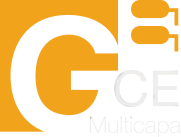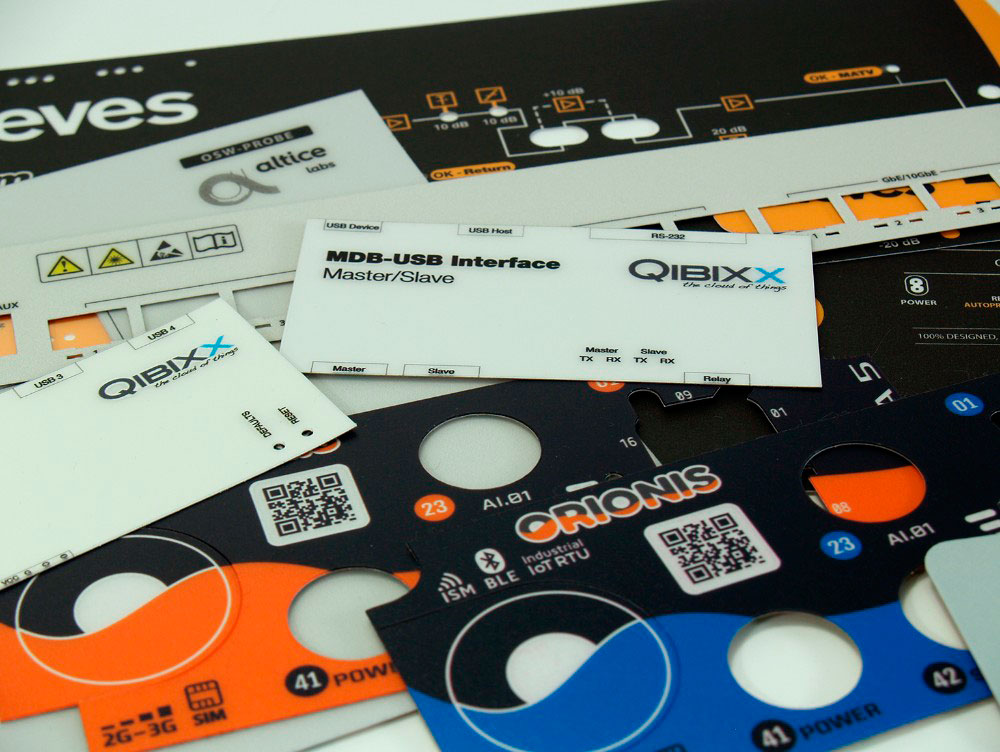GCE initially manufactured screen-printed covers using different screens for each label colour, generating high product costs, long delivery times and a complicated manufacturing process.
In 2008 the company took a major step, creating a new screen-printing section called DIGITAL PRINTING. This section now has a Digital Flatbed Printed, Oryz and an automatic cutting plotter with optical centering by fiducials.
Guarantees offered by digital printing
– Quality printing
– Strokes of up to 150 microns
– Colours limited to four-colour process
– Always ensures the same printing values (L-A-B) or (C-M-Y-K)
– Ultraviolet light for instant printing
– Fast delivery times
Materials used in manufacturing covers or labels
We primarily have two materials, semi-transparent polycarbonate and polyester-vinyl (white background). Choosing one or the other will affect the end label cost.
It is important to take into account that labels with indentations can only be made using polycarbonates and all other labels can be made in vinyl or polyester, which are cheaper materials.
Furthermore, all labels made in polycarbonate are printed on the back to ensure they do not deteriorate with handling. Labels made in polyester and vinyl with a white background feature a sheet of polycarbonate over the print to ensure a similar finish as labels made directly in polycarbonate and to protect the print.
Media that can be used for printing
We can print on any type of medium, except fabrics, and up to a maximum thickness of 5 cm. The medium must be completely flat.
Materials: Wood – Glass – Methacrylate – Stainless Steel – Galvanised Sheet – etc.






